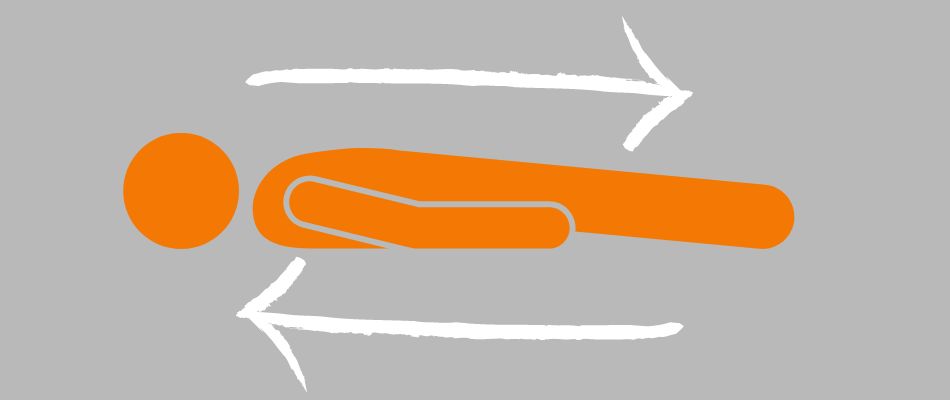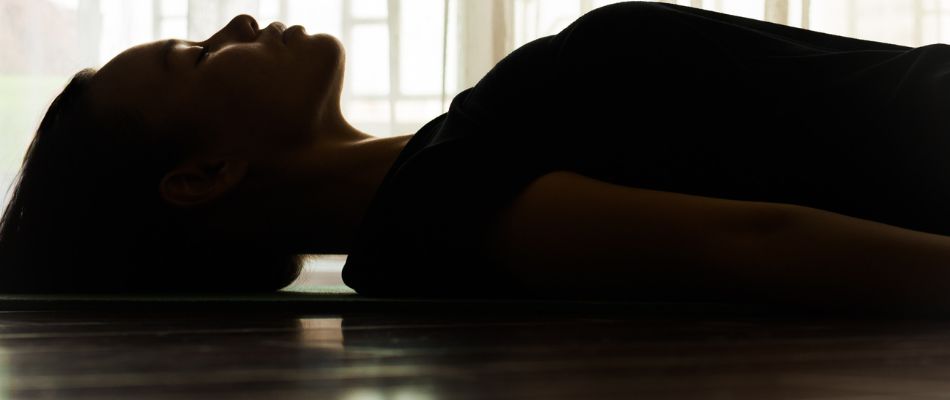What if I told you that there was a style of meditation that requires no prior knowledge, no complex learning or steps, and you can do it quickly and feel results? Not only that, but what if I also cited how it is being utilized by the medical community to help people immediately reduce stress which is hugely important considering that 90% of all illness and disease is stress related? Body scan meditation is the meditation I suggest to new-comers, people who haven’t yet bought in to the esoteric aspects of meditation, and meditators who are having trouble connecting what they feel during meditation to how they feel throughout there day. And, it’s what I do when I am frazzled or my sleep is affected by the stresses in life.
Body Scan Meditation is a technique where a practitioner concentrates on body parts in a specific order, while breathing deeply and releasing tension. The primary benefits include reductions in stress, improvements in sleep, and increased awareness which leads to a better ability to meditate.
Here’s what’s exciting: if you are new to meditating and eager for the benefits, body scan meditation is the easiest way to get started because it requires no knowledge, buy-in, equipment, or much time. If you have “failed” at meditating or been away from it for a while, body scanning is your gateway back in.

An Easy Explanation of What Body Scan Meditation is To Get You Started
The idea of scanning your body can appear pretty foreign or sounds more like a medical procedure but it is actually pretty straight forward. Let me begin by describing it and how it is different than other meditations and then we will jump into body scan scripts you can use with YouTube examples.
10 Steps to Perform Body Scan Meditation
- Set aside 10-20 minutes.
- Sit, stand, or laydown in a comfortable position.
- Close your eyes.
- Begin by concentrating on the crown of your head of your feet. You will begin at one end of the body and move through to the other end.
- Concentrate on a body part just by thinking about it.
- Actively try to relax that space or reduce tension.
- Breathe two deep breaths that include your lungs and expand the belly.
- Move your concentration to the next body part and repeat.
- Use smaller transitions such as crown, forehead, eyes, nose rather than big transitions like head, torso, legs.
- Notice that there is no expectation for what you are trying to accomplish or perceived difficulty. Think about a body part. If you mind wanders, thank if for reminding you of whatever it was, let it go, and return to the body part.
How is Body Scan Meditation Different from Other Meditative Practices?
It is relief for me to be able to explain body scan meditation because it is so easy and straight forward when compared to the other forms of meditation. We wrote an essay on the most popular forms of meditation and you can see that this by far the easiest. Here’s how Body Scan meditation is different from other meditation practices:
Body Scan meditation moves from body part to body part with attention paid to that area for a couple breaths. But unlike Chakra or Tapping meditation, no knowledge of energy centers or meridian points is needed.
Unlike Zen or Vipassana meditations which require more strict concentration and specific postures, Body Scan meditations can be performed sitting, standing, or laying down.
A certain look comes across the faces of some of my more stoic or reserved class members when we start talking about meditation. What they see in the media or in images doesn’t really match their interest or personality. This is a real drawback for many people when they begin meditation is that it seems too “out there,” or too “foreign,” or too “touchy-feely.” I totally get it and Loving Kindness or Sound Bath meditation is something they would need to warm up to. But that doesn’t mean that they can’t benefit from a practice. Body scanning provides a crucial onboarding practice that is neutral, doesn’t have to be religious or spiritual, and is available to everyone.

What are the Benefits of Body Scan Meditation and How Does it Work?
Body Scan meditation has a bit of the “too good to be true” or “too simple to actually work” reputation that we need to discuss with some science. Basically, stress exists in the brain and is compounded when there is a separation between what we are thinking and what we are feeling in our body. The way to undo this is to get out of your head and reconnect with what you are feeling. On a physiological level, deep breathing and reconnection to the body reduces the stress response and reverses the release of stress related chemicals like cortisol.
3 Primary Benefits of Body Scan Meditation
On a practical level, body scan meditation is attractive to the medical community and is being researched to address three of the top medical concerns:
1. Stress Reduction
Body scan meditation promotes stress reduction by encouraging individuals to focus their attention on different parts of their body, progressively releasing tension and fostering mindfulness. This practice enhances self-awareness and the ability to identify and manage stress triggers, leading to reduced overall stress levels. By cultivating a mindful presence within their bodies, individuals can better regulate their stress response and build resilience to daily pressures.
2. Chronic Pain Management
Body scan meditation contributes to chronic pain management by helping individuals develop a heightened awareness of physical sensations. Through regular practice, individuals become more adept at observing and accepting their pain without judgment, which can reduce pain-related anxiety and distress. Additionally, the relaxation techniques employed in body scan meditation can alleviate muscle tension and promote pain relief, offering a valuable complementary approach to managing chronic pain conditions.
In a study of 50 adults with chronic pain where a group who performed a ten-minute body scan were compared with a control group, there was a significant reduction in pain that interfered with social relations when compared to the control group.
Immediate effects of a brief mindfulness-based body scan on patients with chronic pain Journal of Behavioral Medicine (2014)
3 Sleep Quality
Body scan meditation can enhance sleep quality by calming the mind and relaxing before bedtime. This practice encourages individuals to systematically scan and release tension, which can be especially beneficial for those who struggle with insomnia or disrupted sleep patterns. By cultivating mindfulness and reducing racing thoughts, BSM can promote a state of mental and physical relaxation conducive to better sleep quality, improved sleep duration, and enhanced overall sleep efficiency.
In a study of 18 adults who undertook a 8-week course using body scanning and mindfulness techniques to improve their health, Participants shared that they were “not sleeping more, but sleeping better, waking more refreshed, feeling less distressed about insomnia, and better able to cope when it occurred.”
How mindfulness changed my sleep: focus groups with chronic insomnia patients. BMC Complementary and Alternative Medicine (2014)
Body Scan Meditation for Sleep
What follows are resources to start a body scan meditation daily practice but the conversation wouldn’t be complete without also covering sleep. Healing from pain, outlook on life, and stress reduction all correlate with a good night’s sleep. We wrote a separate article which includes a sleep activity known as Taoist Dreaming Yoga. It is a simple scan to do as you fall asleep at night and you can find it here: Tai Chi and Sleep.
Jon Kabat Zinn and Body Scan Meditation
Much of what we know about body scan meditation and its popularity in the West can be directly attributed to Dr. Jon Kabat-Zinn. So this conversation wouldn’t be complete without introducing you to his work. He is widely recognized for his significant contributions to the development and popularization of mindfulness and guided practices. He is the founder of the Mindfulness-Based Stress Reduction (MBSR) program, which incorporates body scan meditation as one of its core practices. Kabat-Zinn, a scientist and meditation teacher, introduced MBSR in the late 1970s as a structured program aimed at helping individuals reduce stress, manage pain, and improve overall well-being.
In the context of MBSR, the body scan is a key technique that Kabat-Zinn adapted and refined from traditional mindfulness practices. It involves systematically directing one’s attention to different parts of the body, cultivating awareness of physical sensations, and releasing tension. Kabat-Zinn’s work emphasizes the role of mindfulness and meditation in promoting mental and physical health, and the body scan meditation is a central tool in his approach.
Through research and clinical application, Kabat-Zinn has demonstrated the effectiveness of this type of practice on stress reduction, pain management, and enhancing overall mindfulness. His pioneering work has played a crucial role in integrating mindfulness practices into mainstream healthcare and wellness programs, making them accessible to a wider audience and promoting their use as tools for improving quality of life.
3 Important Books by Jon Kabat Zinn
As the teacher, scientist, and clinician who first demonstrated the benefits of mindfulness within mainstream Western medicine and popularized the concepts in the West, you can bet that his writings and books are amazing. Here are his top three:
| Book | Title | Price | Reviews |
|---|---|---|---|
 Top
Top | Mindfulness for Beginners: Reclaiming the Present Moment and Your Life | Read Reviews | |
 Top
Top | Wherever You Go, There You Are: Mindfulness Meditation in Everyday Life | Read Reviews | |
 Top
Top | Full Catastrophe Living (Revised Edition): Using the Wisdom of Your Body and Mind to Face Stress, Pain, and Illness | Read Reviews |
Wherever You Go, There You Are: Mindfulness Meditation in Everyday Life (ad)
Full Catastrophe Living: Using the Wisdom of Your Body and Mind to Face Stress, Pain, and Illness (ad)
Mindfulness for Beginners: Reclaiming the Present Moment and Your Life (ad)
And a bonus! Some of the best body scan meditation scripts and videos on YouTube are created by him. So why not learn from the master?
5 Minute Body Scan Meditation on YouTube with Jon Kabat Zinn
20 Minute Guided Body Scan Meditation on YouTube with Jon Kabat Zinn
Quickly Understand What Meditation is and Which to Choose
There are SO MANY ways to meditate! Whether you are brand new or expanding your practice, everyone benefits from learning about different available styles. There might be a style that better meets your needs or fits your personality. That’s why we wrote this essay on what meditation is and the 17 primary styles: What is Meditation – The Primary Styles and Which to Choose
Then, we wrote articles on each of them!
| Body Scan Meditation | Chakra Meditation | Guided Meditation |
| Loving Kindness Meditation | Mantra Meditation | Sound Bath Meditation |
| Microcosmic Orbit Meditation | Qigong Meditation | Standing Meditation |
| Transcendental Meditation | Tapping Meditation | Zen Meditation |
| Vipassana Meditation | Insight Meditation | Walking Meditation |


